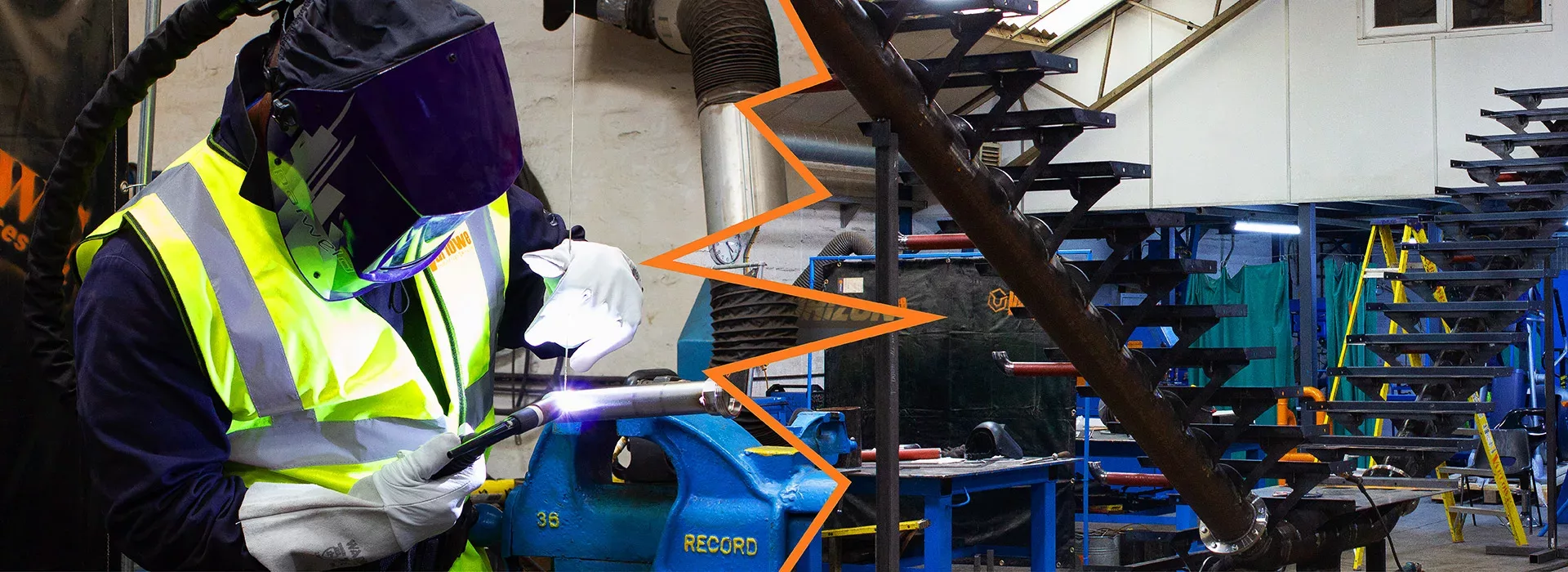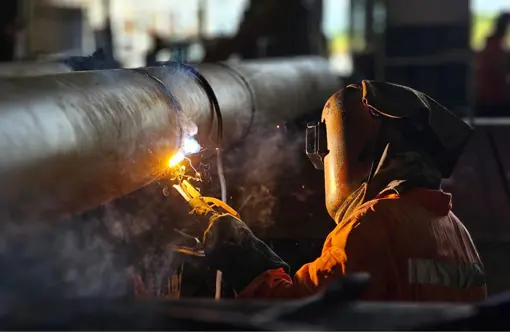All About Welding: Key Insights Into Techniques and Finest Practices for Success
Welding incorporates a range of techniques, each suited for details materials and applications. Understanding these techniques, such as GMAW, SMAW, and TIG, is necessary for accomplishing perfect outcomes. The appropriate equipment and safety and security methods can not be ignored. As prep work and fixing play critical functions in the welding procedure, grasping these aspects can substantially boost the top quality of the last item. What are the vital factors that ensure a successful weld?
Comprehending Different Welding Strategies
Welding methods encompass a variety of approaches, each matched to particular applications and materials. Amongst one of the most common strategies are Gas Metal Arc Welding (GMAW), Shielded Steel Arc Welding (SMAW), and Tungsten Inert Gas Welding (TIG) GMAW, likewise called MIG welding, is prominent for its speed and convenience, making it perfect for slim materials. SMAW, or stick welding, is favored for its simpleness and effectiveness in exterior environments, particularly with thicker steels. TIG welding provides accuracy and control, making it appropriate for elaborate job and non-ferrous metals (Fabrication). Each technique has its special advantages and considerations, permitting welders to select the very best approach based upon the project's requirements, material kind, and preferred outcomes. Understanding these methods is vital for effective welding
Necessary Welding Tools and Tools
While various welding strategies require details abilities, the ideal devices and devices are just as necessary for achieving quality outcomes. Necessary welding tools includes welding machines, which vary depending on the technique-- such as MIG, TIG, or stick welding. Protective gear, including safety helmets, handwear covers, and aprons, assurances safety and comfort during the procedure. Furthermore, clamps and fixtures help secure products in place, making certain precision in welds. Consumables like welding poles, cord, and protecting gas are also essential components that affect the high quality of the weld. Furthermore, tools such as cutters and mills facilitate surface preparation and post-weld finishing, adding to a professional outcome. Purchasing high-quality equipment ultimately boosts the efficiency and effectiveness of welding projects.
Safety And Security Practices in Welding
Appropriate safety practices are vital in the welding market to safeguard workers from prospective dangers. Welders should wear ideal individual protective devices (PPE), consisting of safety helmets with correct shading, handwear covers, and flame-resistant apparel. Sufficient ventilation is essential to reduce direct exposure to unsafe fumes and gases created during the welding procedure. Additionally, employees ought to be trained in the correct handling of welding tools to avoid crashes. Fire security steps, such as keeping combustible products away from the welding area and having fire extinguishers conveniently available, are required. Normal inspections of tools and work areas can aid identify potential hazards prior to they bring about crashes. By adhering to these safety and security methods, welders can develop a much safer working setting and reduce threats connected with their profession.
Readying Products for Welding
Preparing materials for welding is a crucial action that greatly influences the top quality and integrity of the last item (Montana Mobile Welding and Repair Welding). Appropriate prep work includes cleansing the surface areas to get rid of impurities such as dust, oil, and corrosion, which can endanger the weld. Techniques such as grinding, fining sand, or utilizing solvents are typically utilized to attain a tidy surface area. Furthermore, making certain that the products mesh comfortably is essential; gaps can lead to weak welds. It's additionally vital to consider the alignment and positioning of the parts, as this will certainly affect the ease of welding and the last end result. Choosing the suitable filler material and making certain compatibility with the base steels is vital for achieving strong, durable welds.
Tips for Achieving High-Quality Welds
Accomplishing high-grade welds needs focus to information and adherence to finest methods throughout the welding procedure. Proper joint prep work is vital, making sure surface areas are tidy and complimentary from pollutants. Picking the suitable filler product and welding technique based on the base metals is important for optimal bonding. Maintaining regular travel speed and angle while welding can avoid issues and promote harmony. In addition, controlling warmth input is vital; too much heat can bring about warping and compromised joints. Regularly inspecting the welds during the process enables prompt modifications if necessary. Using proper post-weld treatments, such as cleansing and anxiety relief, can improve the sturdiness and stability of the weld, ultimately ensuring an effective outcome.
Fixing Typical Welding Issues
Welding typically provides challenges that can influence the high quality and honesty of the last item. Common concerns such as porosity, irregular weld beads, and overheating can occur, each calling for specific repairing strategies. Recognizing these issues is necessary for welders to enhance their abilities and achieve perfect results.
Porosity Problems Discussed
Although porosity can usually be forgotten, it continues to be an important issue in welding that can endanger the honesty of a completed product. Porosity describes the existence of little gas pockets within the weld grain, which can deteriorate the joint and lead to premature failure. This problem usually arises from impurities, moisture, or incorrect securing gas coverage throughout the welding procedure. To reduce porosity, welders must confirm that the base materials are completely dry and tidy, use suitable securing gases, and keep consistent welding specifications. Frequently inspecting the equipment and environment can also assist identify possible issues prior to they show up in the weld. Attending go to this website to porosity effectively is crucial for achieving strong, sturdy welds that fulfill high quality criteria.

Irregular Weld Beads
Inconsistent weld grains can greatly affect the high quality and strength of a completed product. Various elements add to this problem, including improper travel rate, inaccurate amperage settings, and inconsistent electrode angles. When the welder moves too rapidly, a grain may appear slim and lack infiltration, while moving too slowly can create extreme accumulation. Furthermore, using the incorrect amperage can result in either damaging or extreme spatter, both of which concession weld stability. The welder's method, such as inconsistent torch activity, can also cause irregular bead look. To minimize these issues, welders should focus on maintaining stable, controlled movements and making sure correct devices settings to achieve uniformity in their welds. Consistency is crucial to accomplishing strong and dependable welds.
Overheating and Bending Issues
Extreme warmth throughout the welding process can cause substantial getting too hot and warping problems, affecting the structural honesty of the workpiece. These troubles frequently show up as distortion, which can jeopardize positioning and fit-up, making additional setting up challenging. Aspects contributing to overheating include the choice of welding parameters, such as voltage and take a trip speed, in addition to the kind of product being bonded. To alleviate these concerns, welders ought to preserve regular traveling rate and appropriate warmth input while monitoring the work surface temperature level. Furthermore, preheating or post-weld warm therapy can assist relieve stress and anxieties brought on by rapid cooling - Welding. Normal evaluation and adherence to ideal practices are important in avoiding overheating and ensuring the long life and reliability of welded structures
Frequently Asked Concerns
What Are the Job Opportunities in the Welding Market?
The welding industry offers varied occupation opportunities, consisting of placements as welders, educators, assessors, and designers. Specialists can operate in manufacturing, Extra resources building, aerospace, and auto markets, gaining from strong demand and affordable wages in different roles.
How Can I Boost My Welding Rate Without Compromising Top Quality?
To improve welding rate without sacrificing quality, one must practice effective strategies, keep equipment, optimize settings, and boost hand-eye sychronisation. Regular training and looking for feedback can additionally greatly add to attaining faster, high-grade welds.
What Accreditations Are Readily Available for Welders?
Many qualifications exist for welders, consisting of those from the American Welding Society (AWS), the National Center for Building And Construction Education And Learning and Study (NCCER), and different industry-specific organizations. These qualifications enhance employability and show skill efficiency.
Just How Does Welding Influence the Residences of Metals?
Welding influences the residential or commercial properties of steels by altering their microstructure, which can bring about changes in strength, ductility, and firmness. Warmth input and air conditioning prices during the process substantially impact these product characteristics.
Can I Bonded Dissimilar Metals With Each Other?
